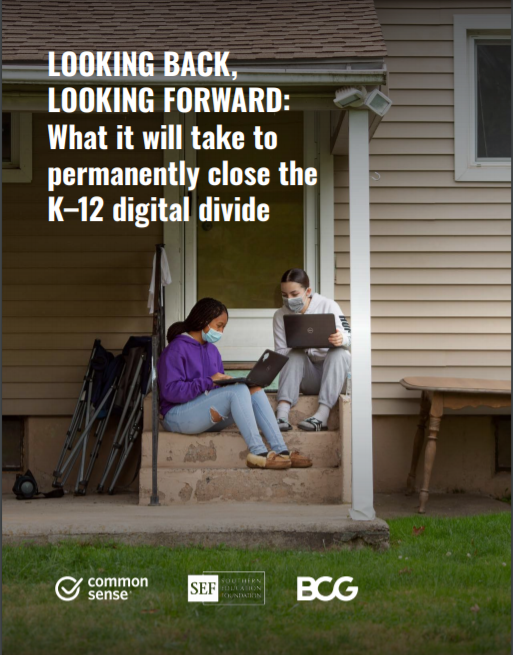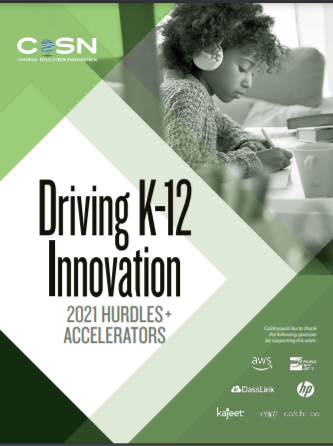
Beth Holland: Barriers, Challenges, and Empathy in Fostering Broadband Access (Part 2 of 2)
Paul Signorelli
—
What we do with universal broadband-access is clearly as important as the efforts we are making, though the ShapingEDU“Connecting for Work and Learning” initiative, to foster that level of access—a theme consistently present during the interview I did recently with Dr. Beth Holland, Partner at The Learning Accelerator and Digital Equity Advisor to CoSN (the Consortium for School Networking), for the ShapingEDU blog.
“Too many assumptions get made about whether access in itself will solve the issues,” she suggested. “However, we have to remember the diversity of this country. It’s going to be very different depending on the culture and context of each community. I was just reading a new report [Looking Back, Looking Forward: What It Will Take to Permanently Close the K-12 Digital Divide, January 27, 2021] this morning from Common Sense and BCG [Boston Consulting Group]. They touch on this idea that a barrier to adoption could be more cognitive than financial or geographic/physical (e.g., no service).
“Another point: Have you seen Dr. Charlton McIlwain’s book on Black Software: The Internet & Racial Justice, from the AfroNet to Black Lives Matter, or Dr. S. Craig Watkins’ work in The Digital Edge: How Black and Latino Youth Navigate Digital Inequality? Both of them, in different ways, touch on the white narrative surrounding technology adoption. Particularly for non-white communities, adoption could look different. Universal access needs to be considered from a more universal perspective, and all voices need to be honored and valued in designing solutions (e.g., stop saying that underserved communities could get served with refurbished devices that the white/affluent community doesn’t want.).”
It's a theme that consistently flows through her writing, including her CoSN article “Digital Equity Isn’t Just About Equal Access to Technology” (July 11, 2019), which includes a summary of what she saw happening in the Albemarle County [Virginia] Public Schools: “From the start, the district recognized that the most critical component of Digital Equity may be whether or not the students and teachers possess the literacy to take advantage of the available tools….Beyond just installing software, the district has also created a multi-tiered support system that includes coaching and professional development for both students and teachers. Additionally, teachers as well as middle and high school students have administrative control over their laptops so that they can customize their devices to best meet their individual needs. The technology department recognizes that without this opportunity to develop these digital literacy skills, teachers and students will not be able to take advantage of the technology to improve their own learning.”
Digital equity is a theme that also receives abundant attention in CoSN’s recently-released “Driving K-12 Innovation: 2021 Hurdles + Accelerators” report, where it is seen as one of the top three hurdles to innovation in K-12 learning. The writers of the report cite data cost, access to digital devices as well as to the Internet itself, limited tech literacy among the parents of some of our K-12 learners, and the challenges parents face in facilitating online learning while those same parents are attempting to work and take care of their children.
“This comes back to the empathy comment that you made earlier: any solution really needs to consider the context and community. What needs to happen beyond access and digital literacy to also address broader issues of media literacy and even algorithmic literacy? I’ve been thinking about the issues of Pandora’s box. We can open it and let things out, but if we haven’t considered the potential unintended consequences of throwing out access without helping students and adults fully develop an understanding of the implications and connotations, then the potential exists to further inequity and not address it. The NDIA [National Digital Inclusion Alliance] has been having this conversation a lot lately, and I think that it’s an important one.”
All of which brings us back to a key point of the conversation we had: what can those interested in fostering universal broadband access for work and learning do?
“Nationally, there needs to be policy changes to make broadband access seen as a public good—like electricity or water,” she suggests. “There also needs to be funding to support both school and home access for students….Regionally, I guess this is tricky because regions are so diverse in this country. A lot of states have regional education groups. A big thing to consider is how regional groups can band together to have more collective bargaining power….Locally, I think it’s important to be aware of who does/doesn’t have access. Teachers may either over/under estimate the amount of connectivity that their students have. Matthew Hiefield, from Beaverton, Oregon, helped me write a post a while ago about questions to ask students. Teshon Christie in Kent, Washington made a great point about not only assuming students have access, but [about] the danger of assuming that they don’t. He’s found that some families prioritize access while others may not. His district has been very deliberate about finding out who needs support from the district instead of using a general metric like free or reduced-price lunch to drive assumptions.”
N.B. – 1) For more information about the Connecting for Work and Learning initiative or to become involved, please visit the project page on the ShapingEDU website or contact organizing committee members. 2) For a lightly-edited transcript of Paul’s interview with Holland, please visit his Building Creative Bridges blog.

